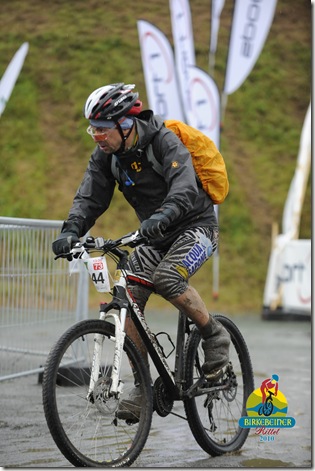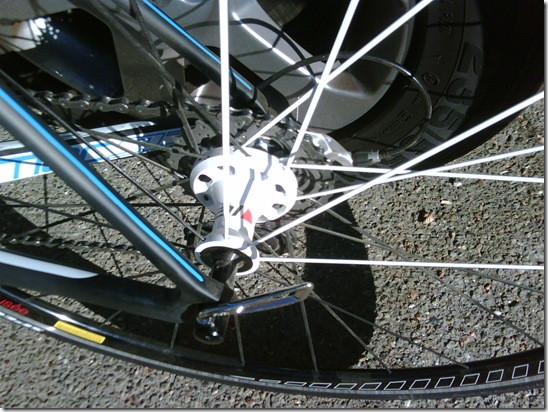More cycling.
Ha! Another opportunity to combine a ride with some work, this time in Norway. I got to do the birkebeinerrittet, the world’s largest Mountain Bike race.
My good friend Mark has recently moved to Norway with his family. I’ve ridden with him on a number other events, including the UK stage tour de France Sportif, and the Grand Fondo Pinarello. He pretends not to train, and then kicks my butt. Legs like tree trunks, lungs of steel and a missing pain gene. Rinse and repeat. Mark’s mate Joel came over from New Mexico to ride it. He is wickedly fit and descends with vim and vigour.
After a busy week with Workday and SAP I got in from San Francisco via Frankfurt in the afternoon. We checked out the rental bike, changed tyres and pedals, and then took the night train to Rena. Norwegian trains are excellent. Clean and punctual. I actually got some sleep. We woke to seriously grim weather. Even the Norwegians were saying it was grim. And they are a tough lot.
The Birkenbeiner is not just a race, it commemorates a significant event in Norwegian history. It is run as a bike, run and ski race at different times of the year.
There was a civil war in Norway. Faction pitted itself against faction in fight for the throne. One faction was the birkebeiners. They were the underdogs, often in such dire need that they had nothing but the bark of the birch-trees as foot-wear. The word birkebeiner, birch-leg, has come to mean a man strong in adversity, never daunted by trials and hardship.
The birkebeiners had gained ascendancy over great parts of the country, but the rival faction, the baglers, prevailed in the East of Norway. After the birkebeiner chieftain Haakon died on New Years Day in 1204, the baglers saw a dangerous rival pretender in his son Haakon Haakonsson , who was born in 1204, a few weeks after his fathers death. His life was at stake, and the birkebeiners wanted to bring him to safety in Trondheim.
On Christmas Day in 1205 the party came to a small farm at Lillehammer, where they stayed in hiding over Christmas. They found it too risky to follow the route up the Gudbrandsdal valley, so they cut across the mountains to the neighbour valley in east, Østerdalen. Due to bad weather and difficult snow conditions the two best skiers,
Torstein Skevla and Skjervald Skrukka had to go ahead with the two year old prince.
“On this trip they suffered much from the cold, snow and wind”. Behind this succinct account of the saga lies a deed of valour and strength with an appeal to skiers of all ages and nations. The 3,5 kilo pack carried by the present day birkebeiners symbolizes the prince, who later became king Haakon. He made an end of the civil war, and under him Norway had a heyday in the Middle Age. The birkebeiner expedition made history.
Here are the original Birkenbeiners.

You have to carry a backpack of 3,5 kgs to symbolize the prince. This was a good excuse for an investment in a Jack Wolfskin backpack with Camelback compatibility, and a heavy duty raincoat.
As is tradition, I had left something important at home, this time it was my polar watch.
We were due to start at 13.30, but we were worried about not making the train back. The pouring rain had turned a lot of the route into a quagmire, so thoughts of a 4 hour time for the 94kms went out the window. The friendly folks at the registration kindly moved us up by 30 minutes, but we still reckoned we would need another plan to get back. Anyway, that was the least of our worries. The maximum temp was forecast to be 8 degrees. I figured that a time around 5 hours would be good going, but I didn’t really know what I was getting myself in for.
I wore most of the clothes I’d brought with me. The rain just kept pouring down for most of the morning. We lurked in a coffee shop, sipping lattes and chomping energy bars and sandwiches.
The race is well organized, with 17,000 odd entrants it needs to be. We started at exactly 13h00

The first part is a long steady climb, for about 11 kms, this is not too bad, although Mark and Joel set a pace that I felt was too quick for me. I blamed jetlag.
It then started to rain again.
We regrouped at the top of the hill. Sometime in the next 20kms I managed to lose a lens from my glasses, and get mud in the opposite eye. The mud scratched my eyeball, so I began to have trouble seeing, especially when descending.
The middle section involves a lot of mud, some of it so deep that it was impossible to ride in.
I let Mark and Joel get on with it, and I stopped at the first aid point and had my eye washed out, but it didn’t really help. Uphill was okay, but I was battling on the downhills. All the folks I passed on the way up, passed me on the way down. I stopped at 4-5 first aid stops on the way, but despite their excellent best efforts, my vision got steadily worse, given the rain and the mud. I was determined to finish though.
The last section is a fast downhill, some tarmac, and some mud. At out 80kms, my back brake on the rental bike gave up the ghost, so I ended up walking in places I would normally have been riding, and doing the rest really slowly.
I finally got to the finish in 6.10, tired and cold, slightly disappointed with my time but really satisfied to have hung in and finished. Mark and Joel finished nearly an hour before me.
(being a good copyright citizen, I bought the photo)
Notice the Mario Cipollini Aqua Sapone look. Bit short on the Sapone.
At the finish we got hosed down, as we were so muddy the showers couldn’t cope.
Here is some video of the event.
and this one.
That wasn’t even the muddiest section. If I find some pics, I’ll add them.
After a quick shower, we figured we had missed the train, but we managed to cage a ride back to Oslo on a bus. The next day I had a lovely time with Mark and Joel’s families, thanks to them for a special weekend. Special thanks to Mark for making this happen and organizing everything.
Monday was a work day in Oslo. Most of the people I met asked me about the race, and several colleagues and clients had also done the race.
I plan to be back to do it again, perhaps next year. I do hope that the sun shines, but this is an epic event. The organization is impeccable and the atmosphere is brilliant. The staff were friendly and professional and I would like to take this opportunity to thank them.
From a social software point of view, Sig watched the race on-line, and tweeted my progress or more accurately, lack thereof. Norwegian TV and the organizers make impressive use of mobile and social technologies. Have a look at the website.
I’d recommend it to any reasonably fit cyclist. 10 out of 10.















